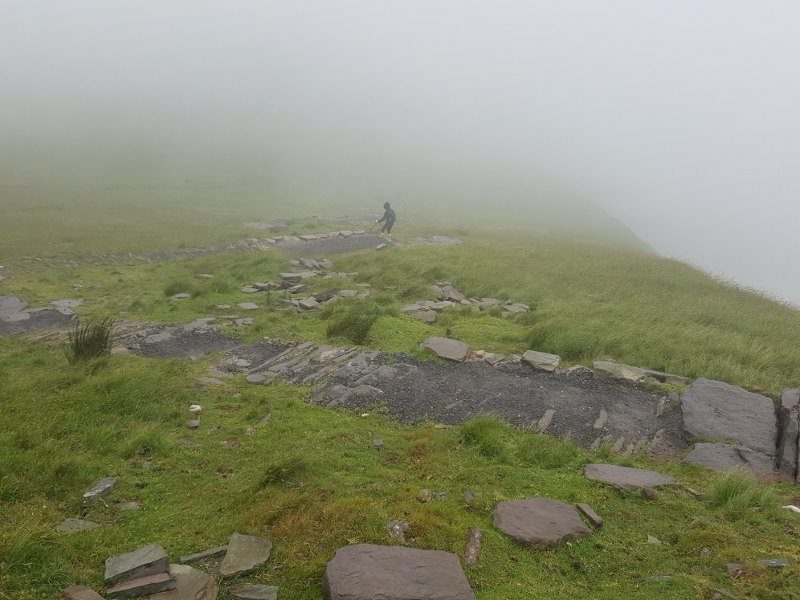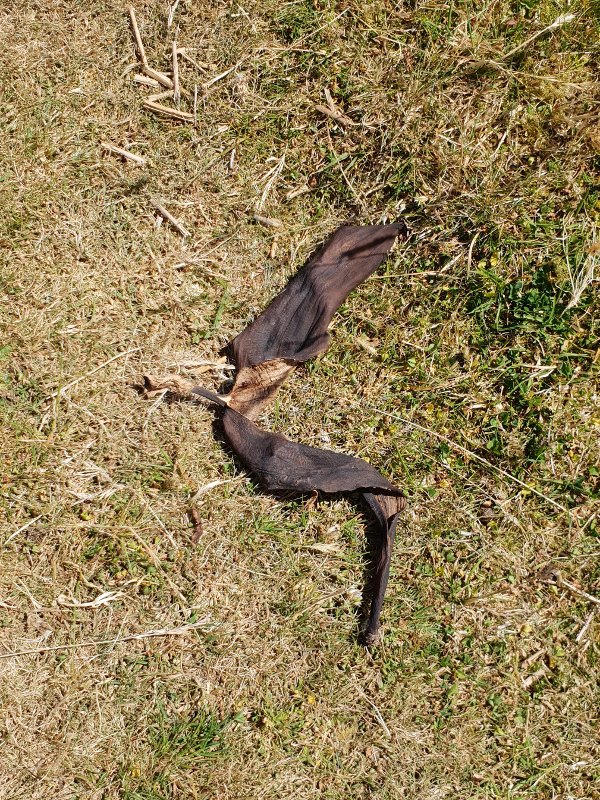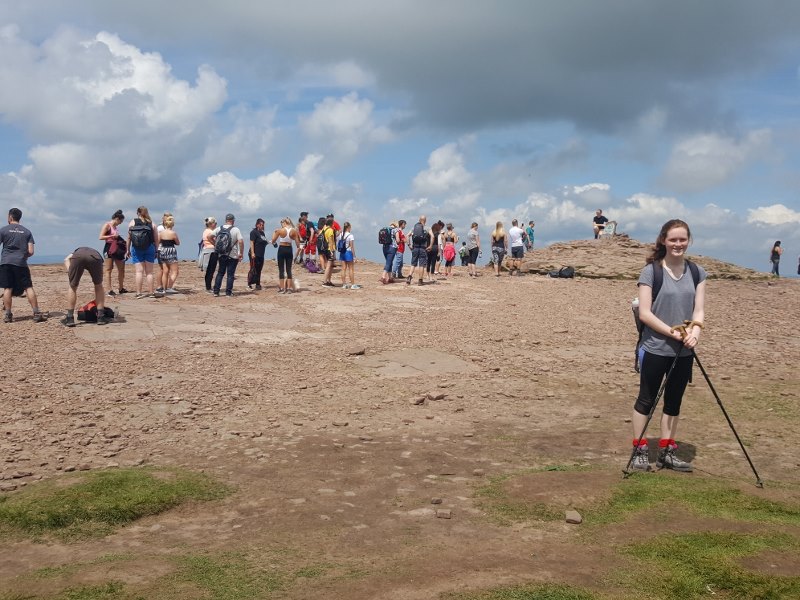I’ve done quite a lot of hill walking in the recent months. Which is great, because I’ve always loved hill walking and I haven’t been able to do as much as I’d have liked in the last few years. It does seem, though, that in the time I’ve been away, hill walking has become much more popular. Some days, some peaks look like anthills. More people on the hills does pose some problems, though, especially as it seems that a lot of them don’t know the correct hill walking etiquette.
And I know the idea of there being a ‘correct hill walking etiquette’ may seem unnecessary and, indeed, pompous. But think about it. Lots of other places have sets of rules for walking. The London Underground, for example, has an established escalator etiquette:
- Stay to the right, if you want to stand
- Stay to the left, if you want to walk

If you’re walking on roads that have no pavement (sidewalk), you walk on the side of the road that faces the oncoming traffic. So, you walk on the on the right hand side of the road in the UK, India, Australia, Japan and some 70 other countries. But on the left hand side of the road in the remaining 165 countries. For a map, see here.
Increasingly, walkers are having to share their pavements with cyclists. This means that there are now walking paths and cycling paths. The etiquette here is that walkers don’t walk, stop, sit, chat, sleep, etc in the cycle paths. As an intermittently keen cyclist, I can confirm that this area of walking etiquette could do with a bit of a Spring clean too.

So, walking etiquette is already established in many places, and it’s useful too. It keeps everyone moving at their best speed, which avoids conflict and anger. And I’m all for avoiding conflict and anger. Cities, public transport centres and country roads each already have a correct walking etiquette in place. Surely having a correct hill walking etiquette isn’t asking too much?
I mean, a lot of the standard rules you’d apply to any walking situation also apply in the hills, things like:
- Don’t suddenly stop in the middle of the path, step to one side
- Look both ways before stepping into the path, so you don’t just step out in front of someone
- If you’re in large group, don’t take up the entire width of the path, allow other people and groups to get by
- Don’t stop for a chat in the middle of the path, step to one side
- Don’t step on the heels of the person in front of you
- Keep pets close by
These are all just common courtesies that apply in all situations including, for example, supermarket aisles! But that’s a battle for another time.
Correct Hill Walking Etiquette
Part of the difficulty in establishing a correct hill walking etiquette, is the diversity of reasons for people being on the hills in the first place.
Anywhere you have people walking, you’re going to have some people in more of a rush than others. You’re also going to have some people who walk faster than others. Roughly speaking, and in order of fastest to slowest, the categories of people walking in the hills are as follows:
- Fell Runners – these people aren’t even walking, they’re running
- Challenge walkers – people doing things like a Three Peaks Challenge or part of the Military
- Fitness walkers – those who are in the hills to keep up their fitness and keep down their weight
- Walkers groups – those doing training for things like 10 Tors or Duke Of Edinburgh
- Ramblers – those who are just there for a day out to take in the sights
- Hikers – those with full packs who are out for a number of days
- Tourists – those who have seen the signs and decided to take a look
Again, generally speaking, the top three categories are going to be in a rush. The bottom three categories are not. The middle one, will move in fits and starts as they learn their navigation skills.
People in the top three categories are also likely to be close to their physical limits, because they’re walking against a clock. This can make them tired, which, in turn, can make them short tempered. This is not a problem, if everyone sticks to the correct hill walking etiquette. It can become a problem when you encounter your 5th group or individual, in the space of 10 minutes, thinking of no one but themselves…

Timing Your Walk
If, like me, you can do your hill walking at any time, choose a quieter time. Try and avoid weekends and public holidays. Definitely avoid times when there are competitions or challenges on.
Parking
When you park, make sure you take as little space as possible, especially at busier times. You’ll be surprised how many other people want to be there.
Be Self-Sufficient
Make sure you have what you need for the walk you’re about to undertake. Have appropriate levels of clothing, food and water. Also make sure that you’ve eaten and drunk before you set off, and your energy and hydration levels are high.
The number of people I see on the hills wearing jeans, teeshirt and trainers is astonishing. This isn’t to say that everyone has to be in hiking boots with a rucksack. Just be sure that jeans, teeshirt and trainers is all you need, given your personal levels of fitness and experience.
Give Way To Walkers Coming Uphill
In terms of correct hill walking etiquette, this is about the most important one. Some of the people coming uphill are right at their limit. Give way to them!
In an ideal world, it would be possible to make a definitive rule, like; always keep left. But, the reality is that ‘keep left’ doesn’t work.
The reason for this is that giving way to walkers coming uphill is more important. Those coming uphill will often seek the shortest route on the path or track, which will be left when the track bends left. But right when the track bends right.
What you can do, though, is stay on the same side as the group on the hill in front of you. Particularly if you’re coming uphill. If the group in front is on the right, you stay on the right too.
Give Way To Faster Walkers
Whether you’re going uphill, downhill, or are on the flat, if you know that there is someone faster that you, stuck behind you, let them by if you can.
This is particularly important when the hills are very busy and there’s constant traffic in both directions. It’s also most relevant to those going uphill, when getting past someone can take a while. Just step off for a couple of seconds, if you can
Don’t Stop On The Path
If you want to stop to:
- Have a chat;
- Have a rest;
- Adjust your clothing;
- Map read;
- Have something to eat or drink;
- Take a photo;
- etc…
Step off the path first.
Don’t Step In Front Of People
If, after doing any of the above, you’re ready to start walking again; check the path is clear first.
Please do not just step out in front of walkers that you know are going faster than you. Wait for them to go past first. This is extremely frustrating, especially on busy days when getting past is difficult anyway.
Use The Paths Provided

In a lot of popular hill walking destinations, paths have been laid, at enormous effort. They are there in an attempt to limit erosion. You should stick to the paths as much as possible, while you’re walking.
Sometimes the sheer number of walkers, or the need to protect an injury, might drive you off the path for a while. That’s fine, walk parallel to the path while you have to, but return to it when you can.
The idea is to ensure that these walks are still available in the decades and centuries to come. Paths will help ensure this.
Keep Your Dogs Under Control
Lots of areas that are popular for hill walking are also farm lands. You will very often find hills populated with sheep, horses and cattle. Do not let your dog chase or worry these animals.
It’s dangerous for the animals.
It’s dangerous to have animals running where there are walkers.
And, it’s a criminal offence under under the Dogs (Protection of Livestock) Act 1953. Under this Act, even having a dog off the lead, around sheep, can be considered a breech. It seldom is though.
A breech carries a fine of up to £1,000, and costs.
Keep Your Music To Yourself
Don’t play loud music.
If you want to listen to your music, instead of nature, that’s fine. Most other walkers, however, do not. Wear headphones.
Look Out For Your Fellow Hill Walkers
If someone looks like they’re struggling, check that they’re okay. If they’re not, and you’re in a position to help them; do so. If not, find someone who can.
Walking in the hills, as I know all too well, can be dangerous. In the first instance, all hill walkers have is each other. So, let’s be there for each other.
Don’t Drop Skins and Peels

This is probably the most irritating aspect of the correct hill walking etiquette to breach. Banana skins and orange peel. Actually the peel of any citrus fruit.
The conversation goes something like this:
Self-Entitled Idiot: What!? It’s biodegradable…!
Everyone Else: Not in this country, you self-entitled idiot!
Citrus peel and banana skins are biodegradable in the countries in which they’re grown: hot countries. Hot countries that have the skin and peel degrading bacteria… that only live in hot countries.
Britain is not a hot country. Ask anyone! And it’s certainly not hot up the hills and mountains…!
Banana skins and citrus peel are not biodegrade in Britain. Apple and pear cores are, though.

Don’t Hog The Features
At the top of a lot of popular hills are features like Trig Points and panoramic views. Some people have come all that way, specifically to get a photo of that Trig Point or from that outcrop. These, then, are not the place to sit for half an hour, while you eat your lunch.
Believe it, or not, it is quite common for queues to form at the top of some hills. All patiently waiting for their turn to get a photo of themselves at the Trig Point. They almost certainly don’t want you sharing the frame, when there’s so much space, just over there…
The same applies if you’re sitting in a really panoramic spot, and groups of people start forming around you. They want to take photos, where you’re sitting. If you’re eating lunch, you can do that anywhere. Please eat your lunch elsewhere.
Offer To Take Photos
If you see an opportunity to take a photo for someone, and you have the time to do so; why not take the photo?
This is particularly the case if you want someone to take photos for you.
In Conclusion
The reality is, that virtually all of this is simply common sense and common courtesy. The problem is that a lack of either of these things is exaggerated by the difference in walking speeds.
A fell walker coming down hill can be doing more than 10 miles an hour. A tourist heading up hill can be doing less than 1 mile an hour. If the latter steps in front of the former, one, or both, of these people could get hurt.
If, on the other hand, everyone knows, and follows, the correct hill walking etiquette, this is far less likely to happen. And we can all relax and enjoy ourselves that bit more.
